As a definition, a fare is usually referenced to in air travel while rates are used with hotels. According to ATPCO (Airline Tariff Publishing Company), a fare is not only the amount a passenger pays, it also contains the conditions for travel at this amount – that are the rules and/or restrictions that must be satisfied in order to qualify for a specific fare.
Together, fares and rules form an infrastructure used for autopricing (identifying a fare electronically). A fare has 13 components, including tariff, carrier, rule, market and amount.
Fare class
Also called fare basis, it contains three parts: fare class code, explanation text and booking code. Based on industry standards, the fare class code is an 8-character code that signals fare parameters in an abbreviated form. The fare class also serves as a bridge between the fare and the rule provisions, thus enabling a fare to price automatically. It is usually assigned by the carrier. It usually indicates class of service and may also indicate basic ticketing requirements a passenger must meet to qualify for a given fare, such as day, season, reservation/payment requirements and fare type.
Fare family
A method of identifying multiple fare classes within a single entry. Lately used to sell bundles of several ancillary services, generic services, fare conditions and booking class (which usually trigger mileage accrual).
Fare rule
A rule that states the conditions of travel for specific fare classes. As used in this document, the term can refer to rules governing published fares (grouped by categories) or to fares that are contained in the text of a rule (fare-by-rule). The term is used to differentiate between this type of rule and a governing rule. A rule has three components: fare class code, booking code and category restrictions.
Tariff at ATPCO refers to a database that contains data defined by system, geographic scope and distribution process. Also, tariff is the term used for information filed with governments when a legal filing is required. It may also refer to written fare and rule information including the following: Published (public) tariff, which contains fare and rule data that is available for public inquiry, whereas a private tariff contains fare and rule data that is not (private tariffs have a limited distribution). Paper tariffs are officially filed on paper with a government.
Traditional Flight Distribution
If the traveler doesn’t use the website of the airline (and hence use the e-commerce engine of the airline) but consults a travel agent who uses a GDS, then the GDS consults a 3rd party data base for schedules of flights (e.g. OAG) and another 3rd party data base for the fares for such schedules (e.g. ATPCO) and combines such data to provide an offer, subject to availability which the GDSs become from the airline.
Airline Retailing in an NDC World
In an NCD world, the idea is slightly different: the offer/order is now created by the airline which combines prices, products and availability. In IATA’s view, the GDSs become content aggregators or the agencies aggregate content themselves. Challenges with such new way of thinking, I listed in my NDC blog.
Blog Series: Travel Technology for Dummies
- What Is Full Content?
- What Is a Booking Reference or PNR?
- What Is Overbooking?
- What Is a Passenger Service System (PSS)?
- What Are Booking, Waitlists, Tickets, Codeshare & Interlining?
- What Are Active and Passive Segments?
- What Are Incentives, Commissions & Overrides?
- What Is a ‘Married Segment’?
- Blockchain in Travel: All You Need to Know – for Now
- What Is the Difference Between Fares, Rates and Tariffs
- What Is NDC?
- What Is Continuous Pricing?
- What Is Direct vs. Indirect Distribution?
Picture source: Bambuh / shutterstock


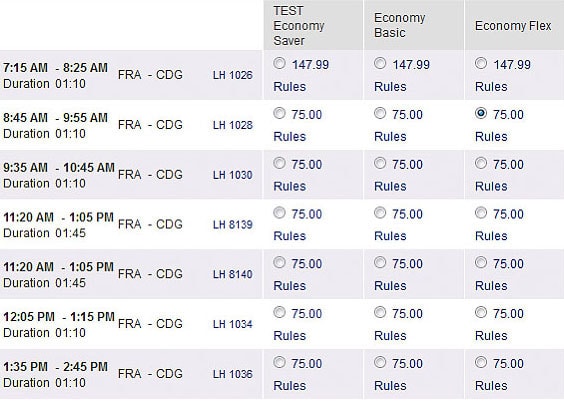
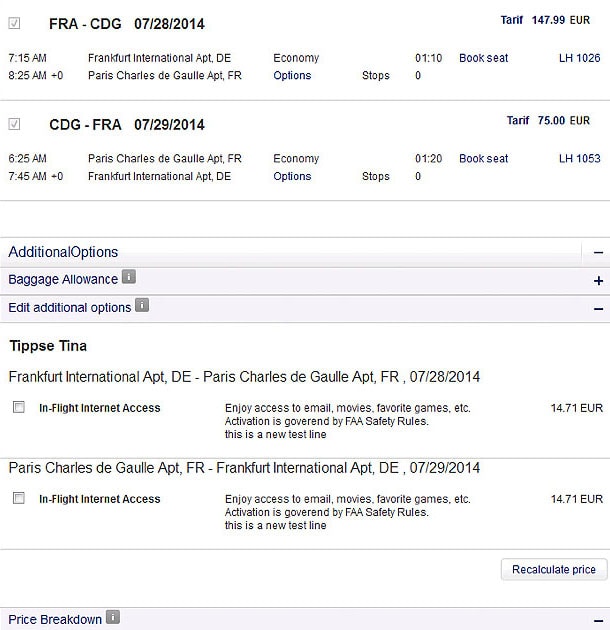
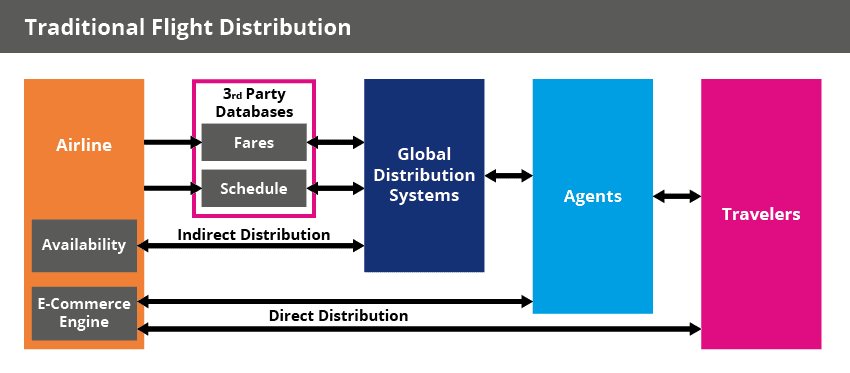
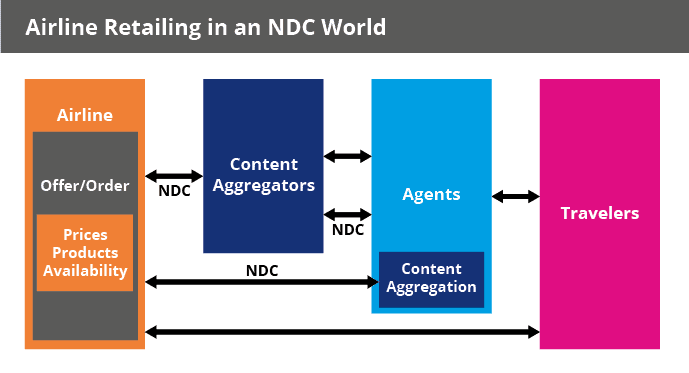


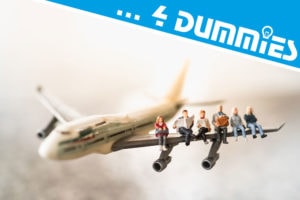
This Post Has 11 Comments
Dear Abhinav,
Sorry for the late reply, but I thought your question is best answered in my new educational blog post NDC for Dummies. Pls. check out https://www.travel-industry-blog.com/corporate-travel/ndc-for-dummies/ and let me know if you have any further questions or concerns.
Thanks,
Michael
How does NDC way of distribution differs from the Ecommerce engine shown in the traditional diagram. What technology does Ecommerce uses to connect to PSS ? Does Ecommerce Engine also uses NDC in the background or is it just a UI connecting to PSS directly ?
well I think airlines are committing too many forced mistakes or unintentionally due to the free markets , brutal competition in other words the DEREGULATION
99% of airliners forgot the QUALITY SERVICE and their intention is to sell or increase at NO profit in most cases
the solution is to FOCUS ON QUALITY SERVICE – INCREASE THE FARE to cover costs of services , excellent marketing performance – the story is too long , however , look at ETIHAD AIRWAYS in spite of being a very rich company they are going to sell 38 aircraft’s due to its losses
best example is SINGAPORE AIRLINES
One way to find deals is to consider traveling when demand is relatively light. Often, you can get a deal on flights leaving on a Tuesday or a Wednesday, when fewer people are leaving on vacations or traveling on business.
Dear Gaurav,
Many thanks. For me talking about faring is slightly uncharted water. I’d rather stick with technology and distribution. Faring and why airlines along with ATPCo file certain things, I leave to the airlines and the Airline Tariff Publishing Company. Airlines even want to control the offer management, away from GDSs (https://www.travel-industry-blog.com/travel-industry/ndc/). As far as I know ATPCO considers Private Fares: Cat.15, ATPCO Nego Fares: Cat.35 and Fares by Rule: Cat.25 – maybe this answers your question? Your question about security, I don’t understand.
Thanks,
Michael
Hello,
If the distribution of fares is controlled by Cat 15, Cat 25 and Cat 35, then why do we have private tariffs? And how do private tariffs limit the security?
Wow, beautiful blog. Thanks for sharing, have a good day.
Dear David,
Thanks for your comment. This is a good question. I would need to guess why the airlines file fare information with companies such as ATPCO instead of the GDSs. ATPCO is owned by airlines, GDSs used to be owned by airlines. This is probably something that has grown historically due to the technology which they had at their disposal and/or regulatory reasons. One company focuses on schedules, another one of fares and a third one on availability – each of them does what they can do best. With today’s capability of technology, this would probably go a different direction – and indeed it does, as airlines are taking back the offer creation into their own hands (compare my Oct-2017 article about NDC https://www.travel-industry-blog.com/travel-industry/ndc/ and my update about NDC in Dec-2018: https://www.travel-industry-blog.com/travel-industry/ndc-gds-onboard/).
Thank you,
Michael
Thank you for you nice words!
hey There Thanks for sharing this great blog!
Dear Michael
Thank you for keeping up this great blog. There are so many insights which are hard to find elsewhere.
I was wondering though: Why does the GDS only contain availability and a separate schedule/fare publisher is required if both information comes from the airline anyway? Couldn’t both be published in the GDS?